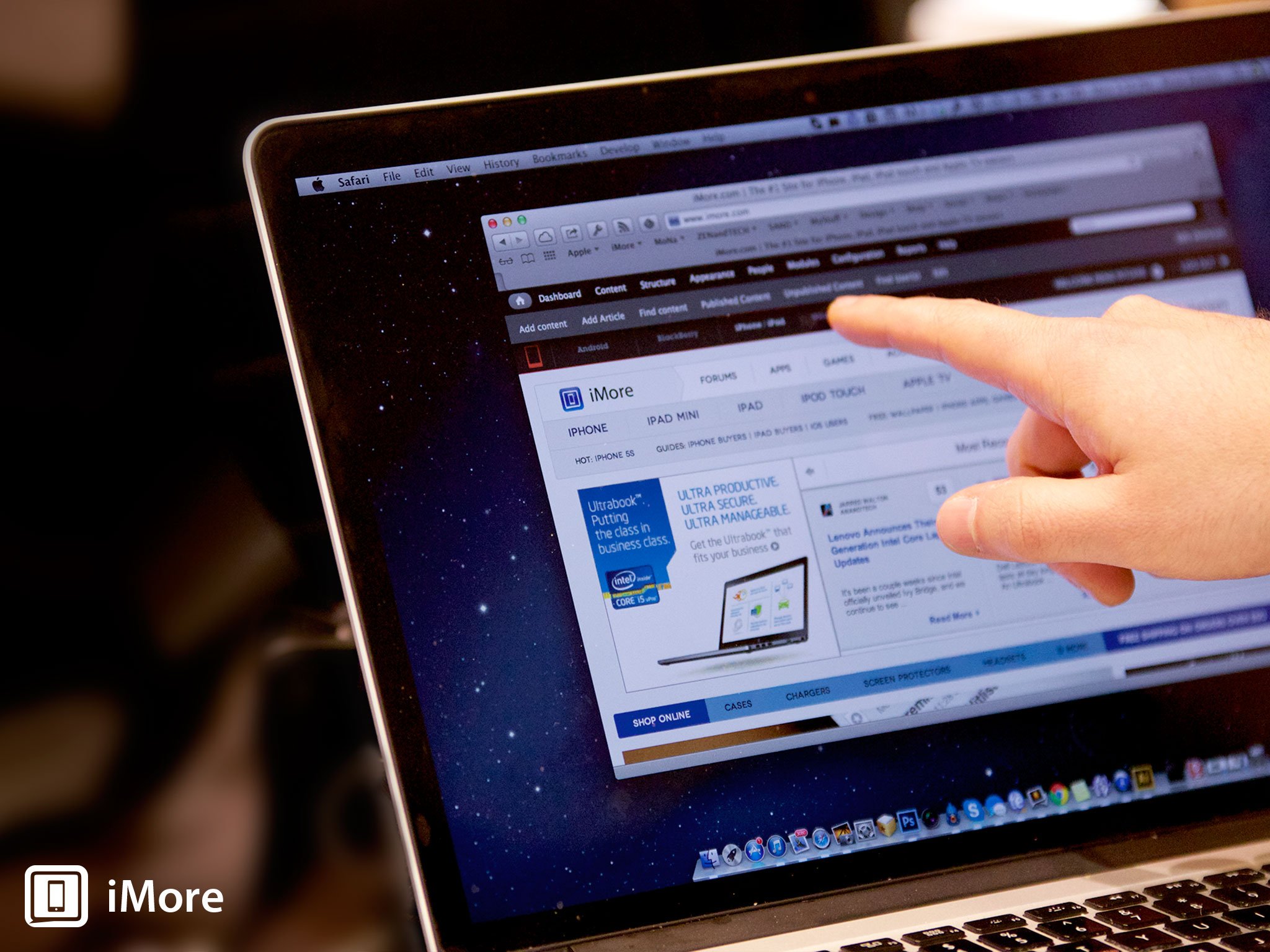Time for touchscreen Macs? Hell no!

With the advent of Windows 8, several PC manufacturers have introduced notebook computers that also operate as tablets - the screens separate or fold over so you can touch, swipe and gesture on your laptop the same way you would a full blown tablet. That's led to a predictable question: When will we see a touch-enabled Mac? My hope is that day will never come. There are better ways to interact with your Mac than to touch the screen. Leave your touching to the iPad.
In point of fact, touchscreen Macs have been around for a very long time. Touch panel developers like Troll Touch produce modified Macs that incorporate touch displays. These are especially useful in special environments like where the Mac is controlling machinery, acting as a Point Of Sale (POS) terminal like a cash register, or working in a kiosk setting. Modbook (née Axiotron) makes the Modbook Pro, a heavily modified MacBook Pro laptop that acts as a tablet that's controlled using a stylus - the company understands its market is limited; its offers options like Adobe Creative Suite 6, understanding its key demographic is artists who want to draw, illustrate and design.
I don't think the Mac, on its own, is ready for prime time as touch screen device. All the things that make touch displays great for special purpose environments make them equally horrible as general purpose devices. The Mac operating system, as it's currently conceived, is heavily optimized still for input via traditional means like keyboards and mice or trackpads. Even Troll Touch's own promotional videos show that things like entering text are awkward at best, on a surface that's positioned perpendicular to a desk surface.
What's more, assistive technologies are already built in to OS X help users who find conventional methods difficult. And speech recognition for dictation and command execution is here today, which makes many think that it's only a matter of time before Apple integrates Siri or a Siri-like product into Macs.
Leap Motion offers another important clue about how the future of user interaction might look on the Mac. This company is developing gesture-based technology that enables you to wave your hands in front of the computer to interact with it. Perhaps it's a little too Kinect-like, but it gives you a sense of alternatives to getting your greasy fingerprints all over your computer screen.
Apple has clearly been interested in touch displays for a very long time, but it went in a very different direction from Microsoft. Instead of bolting on a touch interface for its desktop operating system, as Microsoft did with the Metro UI and Windows 8, Apple created an entirely separate business for itself. iOS and OS X share some common underpinnings, and Apple has, on occasion, borrowed from one for the other, but iOS is fundamentally an operating system and a user interface that was designed specifically for a touch-driven environment.
The results speak for themselves: Macs continue to sell in large quantities, and while the whole PC market is collapsing, Apple's sales of Macs has been markedly better than the industry average. And the iPhone and iPad continue to do very well in their respective markets. Microsoft, meanwhile, has been excoriated for releasing an operating system that has changes that no one really wants.
Master your iPhone in minutes
iMore offers spot-on advice and guidance from our team of experts, with decades of Apple device experience to lean on. Learn more with iMore!
I can't completely rule out a day when Apple would produce a touchscreen Mac. But we'll have to get much closer to a convergence of OS X and iOS than we're at now, or than we're likely to see in the near future. In the interim, count on touchscreen Macs appealing only to a very small niche.

